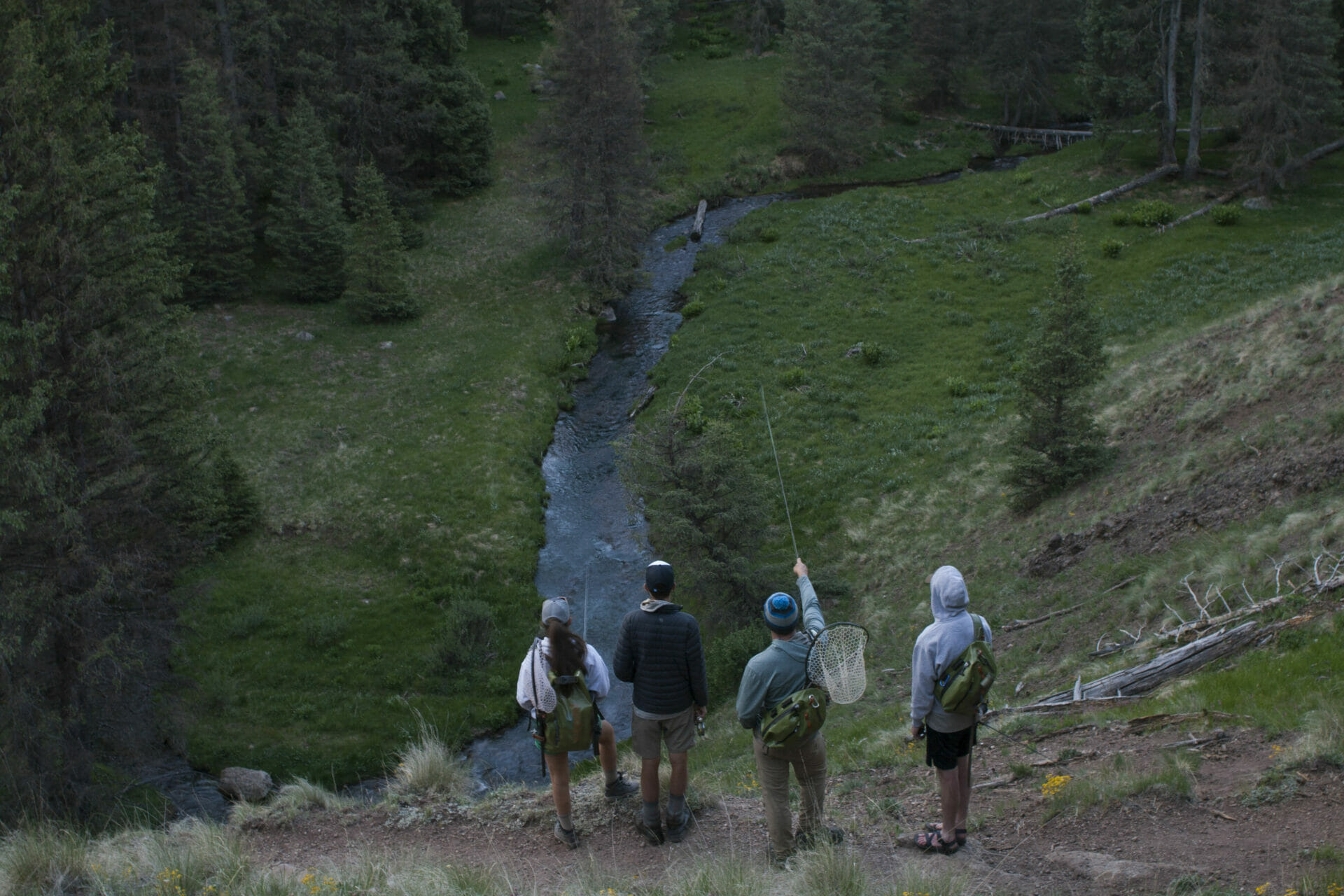
On the Fort Apache reservation, preserving native trout and a tribe’s identity.
In the Western Apache worldview, humans share the earth with birds, elk, fish, insects, plants. Water, air, rocks—all are alive. All are part of the community of life here.
The land is also full of stories. If you know the stories, say Apache elders, the land speaks to you and teaches you how to live.
I am driving with Tim Gatewood—the White Mountain Apache tribe’s longtime fisheries manager—through the cool pine forests and backcountry meadows of the Fort Apache Indian Reservation in east central Arizona. He is pointing out lakes and campsites, telling stories about things he’s seen on the land, and explaining the tribe’s mission to preserve the native Apache trout that have thrived for eons in these rugged mountains.
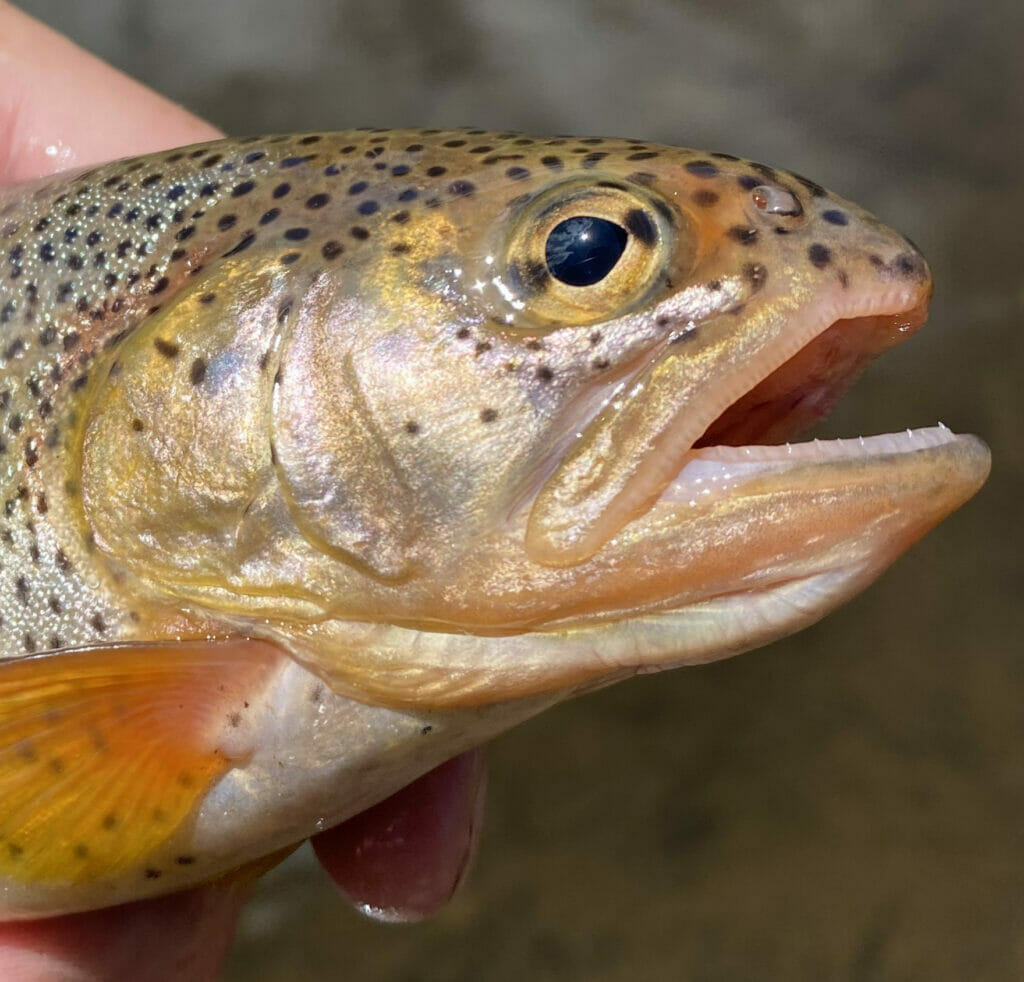
Tim tells me that, as original inhabitants, Apache trout belong to this place and have a right to exist. “We respect all creatures,” says Tim. “We respect the water and the life that was found there in the beginning.
“Once you destroy things, a lot of times they don’t come back,” he adds. “They’re gone forever.”
Tim knows something about loss. Later that day, driving up Log Creek road, Tim pulled the truck over to the side, and parked.
“This is where it happened,” he said. By the side of the road stood a polished headstone—incongruous in the remote forest setting. The inscription read, “Tenney Gatewood Jr., Sept. 11, 1961-Dec. 9, 1999.”
In 1999, he told me, his big brother Tenney, a tribal police officer, answered a report of a burglary and tracked the suspects to this remote spot. After a brief scuffle, one of the men wrestled away Tenney’s service revolver and shot him to death. Tenney was 38 years old.
“They say time heals all things,” Tim said, slowly, his voice thick. He put on his sunglasses. “But it doesn’t. There are some things you never get over.”
After a moment, he put the truck in gear and drove on.
Around the time of his brother’s death, Tim got a job with the tribal game and fish department and focused on the things that have shaped his life purpose—his son Justin (a newborn when Tenney died), his wife, his community and his job protecting tribal lands, waters and wildlife.
“You have to take care of what you have,” he told me.
“‘How will it breathe,
this earth?’ Then
came Black Thunder
to that place, and he
gave the earth veins.
He whipped the
earth with lightning
and made water
start to come out.”
—The Earth Is Set Up, Western Apache creation story

Over the decades, the White Mountain tribe has worked to steward the incredible bounty of their land as a way to preserve their cultural identity and heritage as well as provide a sustainable future based on outdoor recreation, logging and other resource-based businesses.
It’s an inspiring conservation success story. And at the heart of it is the Apache trout.
In Arizona’s frontier days, native Apache trout were plentiful in these mountain headwaters, inhabiting 800 miles of streams. The Apache trout, which is closely related to the rainbow, is perfectly adapted to the extremes of flood and drought that characterize these small streams. Apaches have medium-sized spots spread evenly on their olive body and a creamy yellow underbelly. There is nothing like them on Earth—that’s why the reservation has become a destination for anglers from around the world.
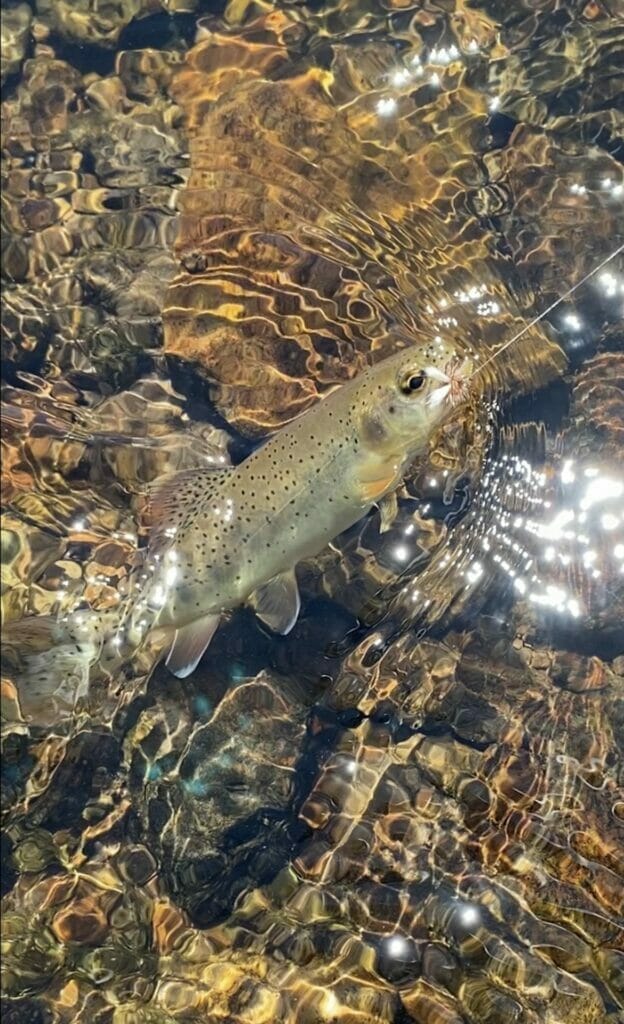
In 1876, an advertisement in Arizona newspapers proclaimed that the Apache trout, then known as speckled mountain trout or “yellow bellies,” provided “rare sport to followers and devotees of Izaak Walton.” In 1939, one old-timer of the Fort Apache area recalled fishing the streams of the White Mountains in his youth: “I personally remember that from 1898 to 1916 the fish were so plentiful that it was no trick for a boy to catch 100 in a few hours or 200 in a full afternoon.”
Not surprisingly, such overfishing led to serious declines in Apache trout numbers. Then, in the decades before World War II, the Bureau of Indian Affairs, without consulting the tribe, instituted exploitative ranching, farming and timber policies that scarred the health of reservation lands and degraded waters. At the same time, to address the declining Apache trout populations, state and federal agencies implemented a wrong-headed hatchery program that emphasized populating tribal streams with non-native fish.
“People brought in browns, rainbows, brookies—these outcompeted the Apache trout and pushed them into a few head-water sanctuaries,” says Gatewood.
Apache trout populations plummeted.
By the early 1950s, Apache trout were in serious trouble—the last remaining pure-strain populations isolated in a handful of streams on Mount Baldy, the sacred mountain that overlooks the Fort Apache Reservation. They populated fewer than 30 stream miles. They were on the brink.
Then something remarkable happened. The White Mountain tribe realized that their cultural heritage and identity was at stake. Decades before the Endangered Species Act, they moved decisively to recognize the Apache trout as deserving of special protection.
In 1955, they closed fishing on Mount Baldy headwater streams that contained pure-strain Apache trout.
In coming years, the tribe worked to restore riparian habitat along streams and rivers damaged by overgrazing and erosion. They built and maintained barriers on native trout streams on Mount Baldy to ensure that non-native trout couldn’t infiltrate these last refuge areas.
It was the beginning of a remarkable turnaround for Apache trout—and for the tribe, which began developing its own outdoor recreation program to enhance angling and hunting opportunities on the reservation and build its own tourism economy.
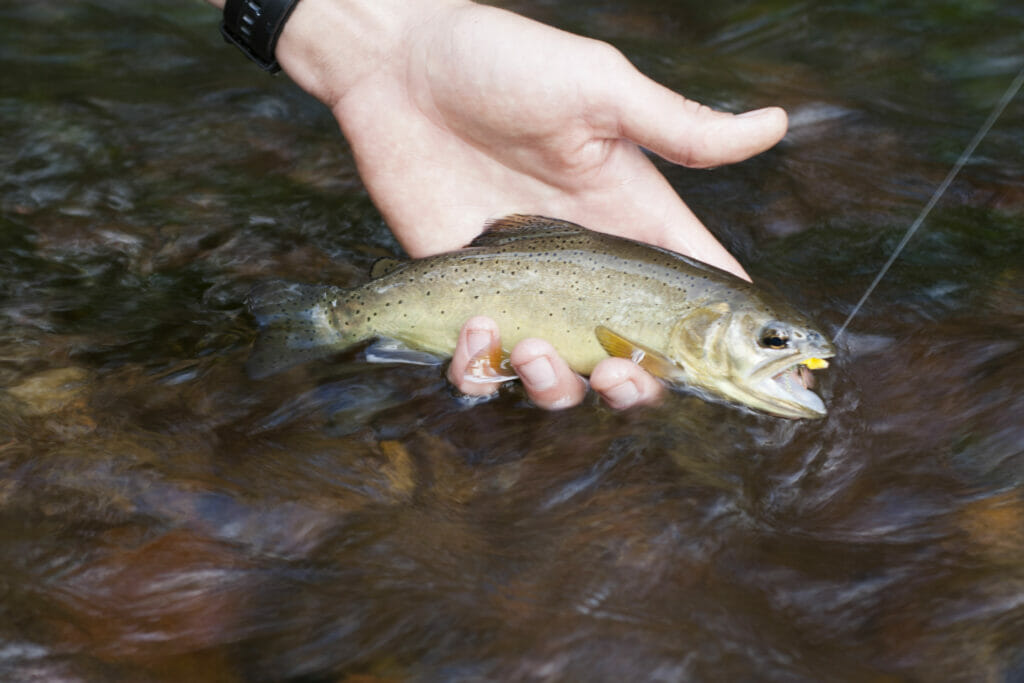
The tribe, working with state and federal agencies, also began a hatchery program for Apache trout that today raises millions of trout eggs that are hatched and grown into catchable-size fish; each year, about 100,000 Apache trout are stocked in lakes in May and June and weekly throughout the summer in area streams, such as the North Fork of the White River.
In 1975, the White Mountain Apache Tribe, Arizona Game and Fish Department, U.S. Fish and Wildlife Service and U.S. Forest Service formed the Apache Trout Recovery Team, with the goal of restoring the species to historical levels and ensuring its long-term survival. The partnership includes TU and other private conservation groups.
Most observers say the White Mountain tribe’s early and visionary action is primarily responsible for pre-venting the extinction of Apache trout. “The tribe’s leadership was monumental for conservation of Apache trout,” says Julie Meka Carter, manager of Arizona Game and Fish’s aquatic program. “Our present recovery plan relies entirely on their early protection of those relic lineages.”
Six decades later, the headwaters streams, high on Mount Baldy, remain closed to fishing. In the tribal management philosophy, there is a place for recreation—and there is a place for conservation. The popularity of the stocked streams, says Tim, helps protect and ease the pressure on the Mount Baldy streams that shelter the most pure-strain and wild Apache trout. These are the ancient ones, who safeguard part of the tribe’s story and identity.
While Apache trout are on the rebound, they remain—like other Southwestern natives such as Gila trout and Rio Grande cutthroats—threatened by looming pressures such as climate change, drought and wildfires. The massive Wallow Fire of 2011 scorched more than 500,000 acres nearby. By expanding the number of streams that harbor Apache trout—such as on the West Fork of the Black River, where a new barrier this spring opened up 14 miles of water to Apache trout reintroduction—the tribe and its partners hope to build resilience into the native trout population.
Apache leaders know that a key to preserving their homeland’s resources is tribal youth. They want young people to know not only biology and science and technical skills; they want them to know their land, its creatures and stories.

Tim wants the land to speak to them. When Justin was younger, he often rode along while Tim patrolled the reservation backcountry.
“When I took him places, I’d tell him, ‘This is your backyard,’” said Tim. “When I see something, I want him to see these places. A lot of the young people haven’t seen these different areas. A lot of the young people had never seen Cibecue Falls. They were very impressed. And you know what? A lot of parents have never seen those places. Those kids will be guides for the parents, taking them to some of these special places.”
The Fort Apache schools have begun incorporating TU’s Trout in the Classroom program to teach Apache youth about the life cycle of trout.
In recent years, the tribe started, with the support of the U.S. Forest Service and Southwest Tribal Fisheries Commission, a Youth Conservation Corps summer program for Apache teenagers. This summer, eight high school students, including his son, Justin, signed up for an eight-week course to learn more about the reservation’s wildlife. They electroshocked streams and took fish surveys, helped trap and collar elk, and learned how to analyze a stream for flow and riparian health.
They also are allowed to be kids, discovering garter snakes and frogs.
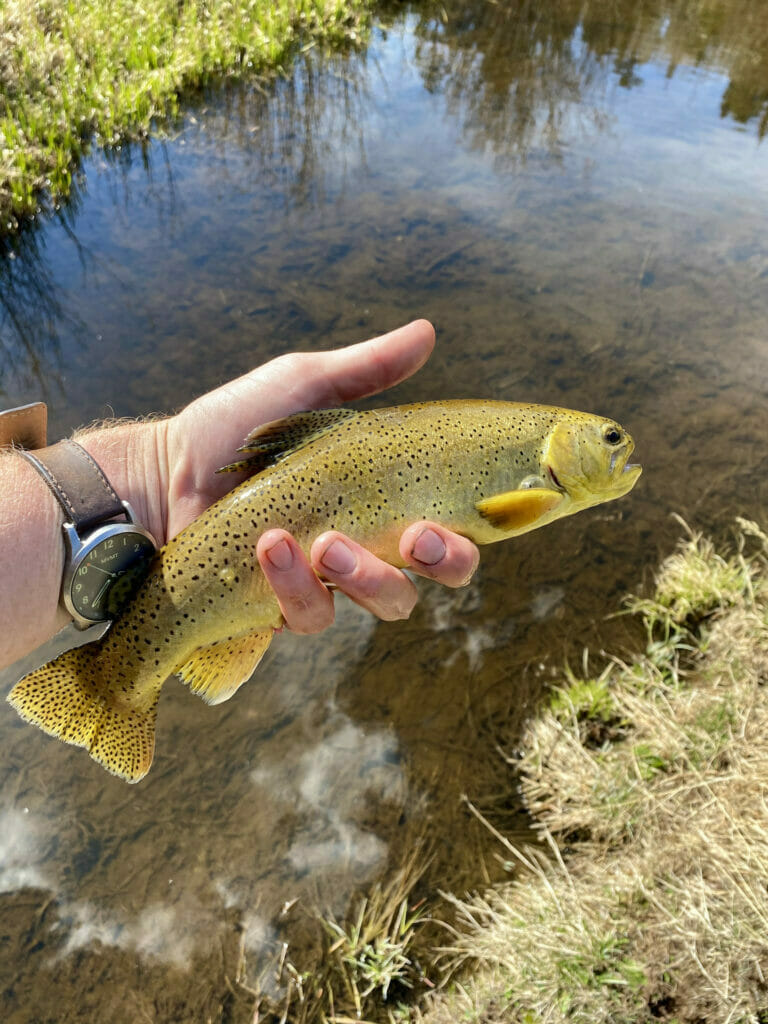
Tim clearly wants Justin to follow in his footsteps. Whether or not that will happen is unclear—Justin said “maybe” when I asked him if he wanted to work with wildlife on the reservation. He loves to draw and has other interests. Like many young Americans, he feels the pull of electronic screens and distant places.
But thanks the summer program, he and other Apache youth also now have stories to tell about their experience on the land. Tim’s work is coming full circle.
In the reservation office, I see a t-shirt with a Rachel Carson quote: “The real wealth of the Nation lies in the resources of the earth—soil water, forests, minerals and wildlife.”
Up in the headwaters of Mount Baldy, the Apache trout silently swim on, hold on, secure in their place on Earth.
The land is full of stories.
Randy Scholfield is TU’s director of communications for the Southwest region.



Comments